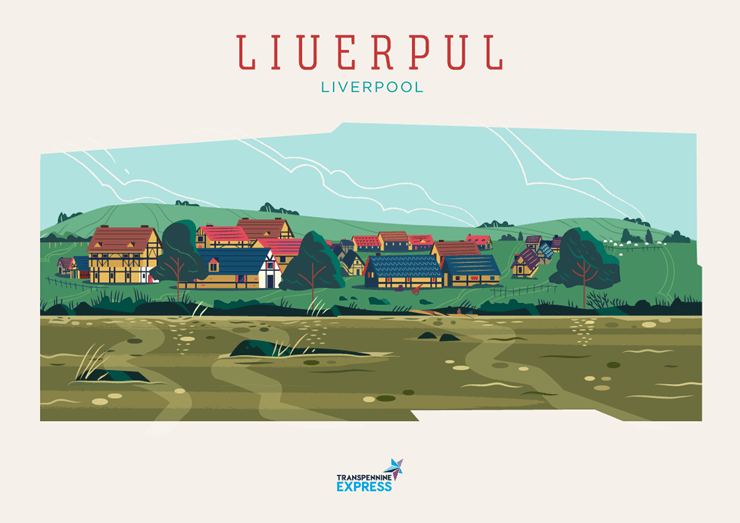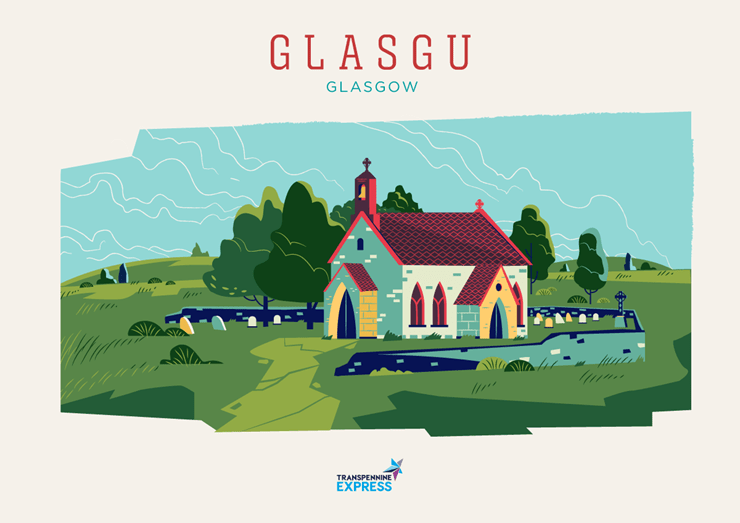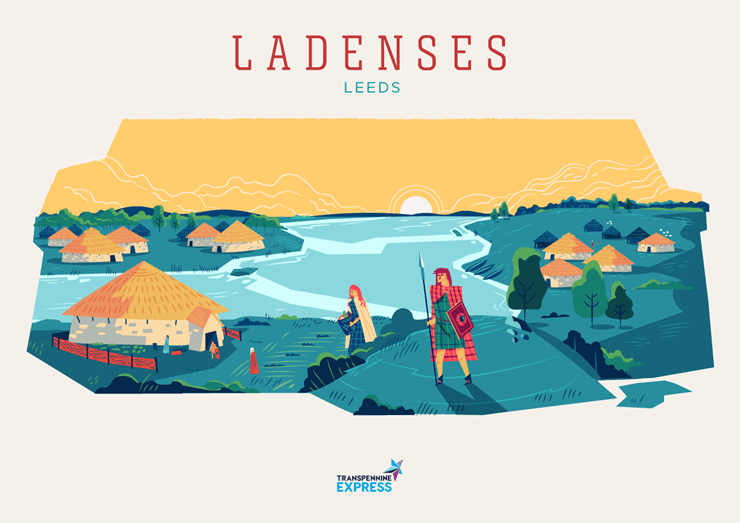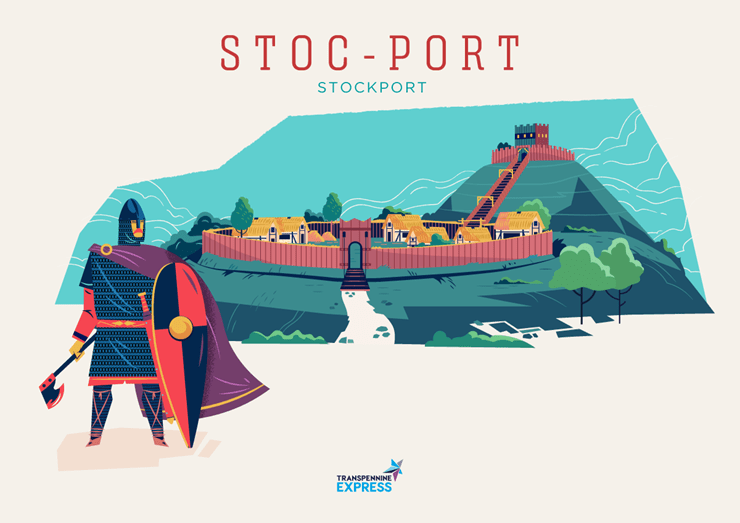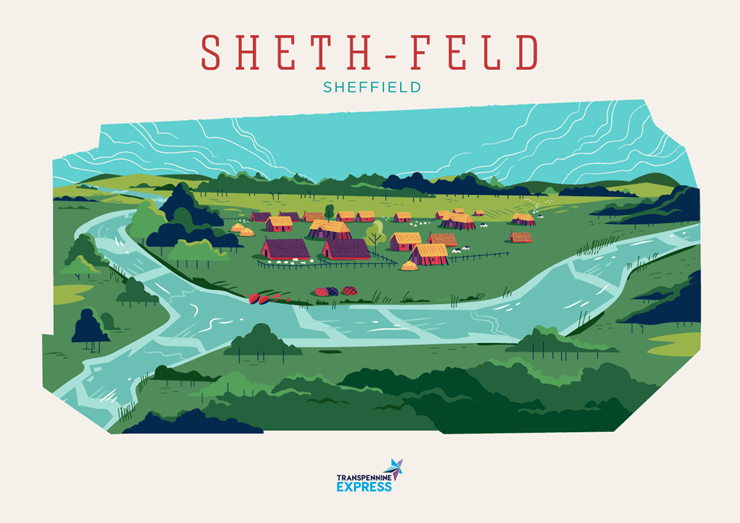Cheap Ticket Alerts
Get notified by email when TransPennine Express Advance tickets go on sale
We use cookies to improve your online experience and provide personalised services. By choosing “Accept all”, you’re making sure your experience is as sweet as a real-life cookie.
Find out more about our cookie policy.

The North of England and Scotland in Medieval times was a violent place besieged by battles. Both the Celts, the Anglo Saxons and the Romans were conquering, dividing and taking the countries for their own.
Yet across the centuries and up until now their influence remains through their language and the names they gave to their settlements. Whether that’s the Romans in Manchester, the Vikings in York and the North East Coast, or the Celts in Scotland and Cumbria their legacy lives on through the towns and cities we visit or call home.
We’ve been delving into the past and looking at the history of 10 northern UK cities and towns. Here’s how they got their names.
The Mersey is synonymous with Liverpool and it seems the river even had an impact on the city’s original moniker. The name Liverpool can be traced all the way back to 1190 when it was known as Liuerpul, which means a “pool or creak with muddy water”.
While it might not inspire thoughts of the glistening city we know today, it resembles its humble beginnings. Over the years it’s evolved through different spellings, but still stays true to its origins, with the pool that contained the muddy water thought to refer to the inlet that still flows into the Mersey today.
The early Gaelic name of the city was first Glaschu or the Cumbric glas cau which is believed to mean “Green Glen” or “Green Valley”.
It wasn’t until 1116, that the modern name Glasgu began to appear when a religious community was established in the settlement and a church was built. This happened with the arrival of Saint Kentigern, also known as Mungo. The ancient site of the chapel is where the current cathedral stands, built in the 12th Century and dedicated to St. Mungo.
Manchester has its roots firmly in the time of the Romans, which is reflected in its early name. It’s thought it was named in the 1st Century, around AD 78-86, following the creation of a small fort on top of an outcrop at the convergence of the River Irwell and River Medlock.
The name Mamucium means “breast-shaped hill” and is a Latinised form of the Celtic meaning. Fitting as the fort was used by the Romans to defeat a local Celtic tribe.
Many believe the name of the city to translate simply as “Castle Rock” and for anyone that visits it’s easy to see why this name fits so well.
However, in 600 AD Edinburgh was actually referred to as Din Eidyn, which is said to mean “fort of Eidyn” which is a specific kind of Celtic hill fort.
What was once up for a little deliberation was whether Eidyn was in fact a reference to Edwin and directly related to the 7th Century King Edwin of Northumbria. This has now been disproved by local historians with it questionable as to whether Edwin ever made it this far north to give him his name to Edinburgh.
The inaugural title of the city is still a little up for debate. In some circles, the first designation was Loidis, which was then changed to Ledes. The latter is how it was referred to in the Domesday Book after the Norman invasion. For those in this camp, it is said to mean a forested area of the Celtic Kingdom of Elmet, which was in existence until the 7th Century.
Others believe, the original name to be Ladenses which is a Celtic term for “people of the fast-flowing river”; quite different from Leeds!
Sometimes the simple names make the most sense. Take Stockport for instance, which quite literally translates to “a castle in a wood”.
The original settlement was Saxon and was situated on a cliff overlooking the River Mersey. It was an important spot where a number of Roman roads met and crossed the river. The first name as it was then, derives from two specific words: Stoc which refers to a “castle” and Port which means a “wood”.
The city’s initial name is Old English or Anglo Saxon and is thought to date back to the arrival of the Anglo Saxons in this part of the country. This could be anywhere between the 6th and the 9th Century.
The name itself derives from the River Sheaf, with sheaf being a corruption of shed or sheth meaning to “divide” or “separate”. Feld in Old English means “a forest clearing”. It’s safe to assume that Sheth-Feld therefore refers to a settlement in a forest clearing near the confluence of the River Sheaf and the River Don.
While York takes most of the Viking credentials, Scarborough had an important role to play too. It was christened as Skarðaborg in 966 AD by a Viking raider called Thorgils Skarthi.
Having defeated the Anglo Saxons to take over the settlement, Skarthi couldn’t resist a show of personal strength and vanity by naming it after himself. The Viking word Borg, where Borough is derived from, means “stronghold” or “fortress”. It is thought that the direct translation means “Skarthi’s Stronghold”.
Now this one is still often called into question. Of all the towns and cities on our list, the origin of the name Penrith is still a little foggy. It’s not just that, for some it’s also shrouded in controversy.
For many it is thought to come from either the Celtic words “penn” and “rid” which means “hill ford”. Those on the other side of the argument also feel that the origins are Celtic (specifically Cumbric) but that it derives from “Pen Rith” which translates to “red town”.
Anyone who’s spent any time in York will know there is a heavy Viking influence on the area. In fact, the Vikings defeated Anglo Saxon rule in 865 AD and took not just the land, but its name too.
The primary Anglo Saxon title was in fact Eoforwic which is thought to translate to “wild boar settlement”. Once Viking authority was established it was adapted to Jórvík which is believed to have meant “horse bay” to the new residents.
Now you know the history and you’ve travelled way back to find out how they got their names, the time has come to explore and dive into the bygone times of these fantastic locations yourself.
With TransPennine Express you can experience the very best of Northern England and Scotland, taking in the history of some of the oldest cities and towns in the UK. It’s time to probe right into the past. Who knows just what you might find?
Stay in the loop
Subscribe to our emails to get access to special offers, exclusive competitions, and the best travel tips directly to your inbox.
You’re being redirected to an external website.
Sign up for email to stay in the loop
